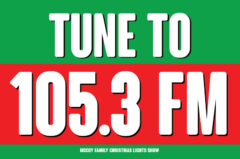How Our Show Is Created
The McCoy Family Christmas Lights Show is a huge project. From selecting music and programming the show, to building the props and setting everything up in the early Fall — it’s something we work on year-round.
Actual setup of the light on the house begins in early September and is completed by mid-November. We don’t place the Christmas elements that can be seen during the day (garland, wreath, nativity scene, etc.) until early November. But by this time, 80% of the show (house outline, trees, bushes, etc.) is installed and tested.
Once all elements of the show are installed, the testing begins. Any elements that need pixel replacements are fixed and re-tested.
In the two week leading to Thanksgiving Night (opening night), the computers, FM transmitter, playlists, and show schedule are tested.
Then on Thanksgiving Night, our seasonal show begins!
Concept & Design

Designing a light show is much more than just tossing strings of lights on the bushes. We design the show with several things in mind, including the public’s view, how to run the data lines, power requirements, and more.
Our show is unique to other Christmas lights shows, because we designed it to ‘hide the magic.’ This concept means we want to hide as much of show elements and back-end as possible.
During the daytime, our home looks much like any other home that is decorated for Christmas. You see garland, a wreath, luminaries, and Santa on the front porch. We don’t use coro-plastic elements in the middle of the yard, for example. Other than the show’s “tune to” signs, there isn’t much you can see that looks out of place during the day.
Interestingly, our landscaping was designed for our show! Even our front porch, which looks like wooden columns and a wood beam are designed for the show. The header beam is actually a hidden channel for much of the show’s cabling.
The Magic is in the Pixels
The lights used in our show are called ‘pixels.’
Unlike traditional Christmas lights, each pixels is controlled independently by the show computer. Each can display 16-million colors and they work together to create effects across the show.
We use several different types of pixels, depending on the prop. Most pixels are called ‘bullet pixels’ or ’12mm pixels.’ Bullet pixels cover the entire house, trees, bushes, and other elements.
The luminaries use ‘Brilliant bulb’ pixels. The housing is larger and scatters the light. These are the same size as a traditional C9 bulb.
New for 2023 are the much smaller ‘EVO pixels’ which look like gumdrops. With their smaller size and completely transparent housing, they glow in nearly all directions. These are mostly used inside of props that need to glow, such as the big bulbs on either side of the front porch walkway.
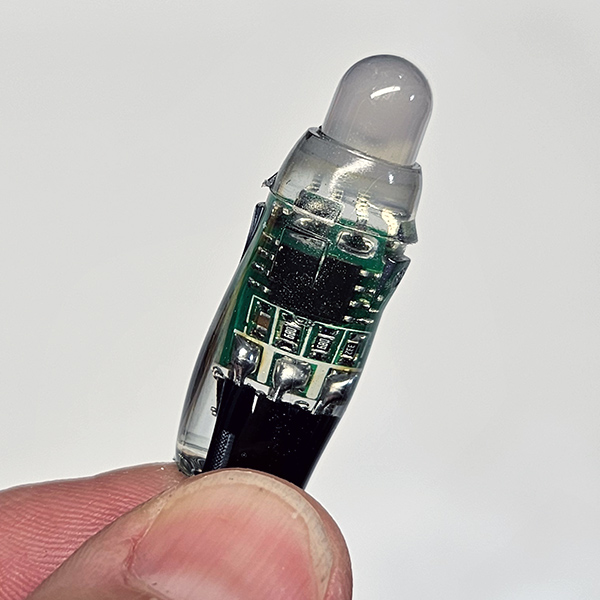
12mm Bullet Pixels

Gumdrop Pixels
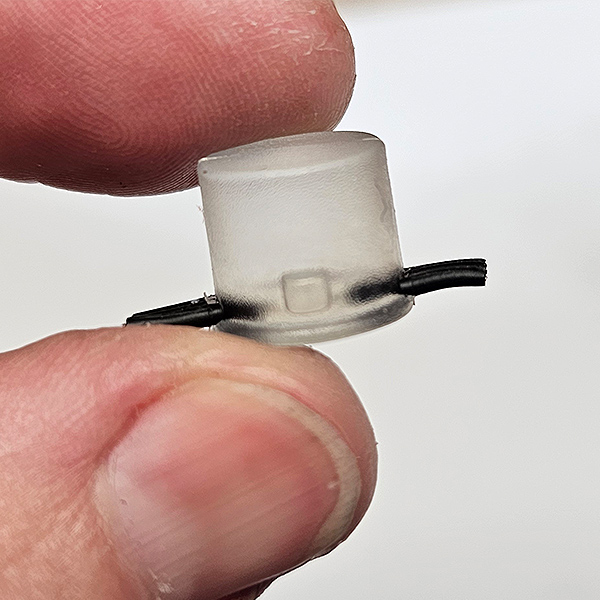
EVO Pixels

C9 Bulb Pixel

Seed Pixels
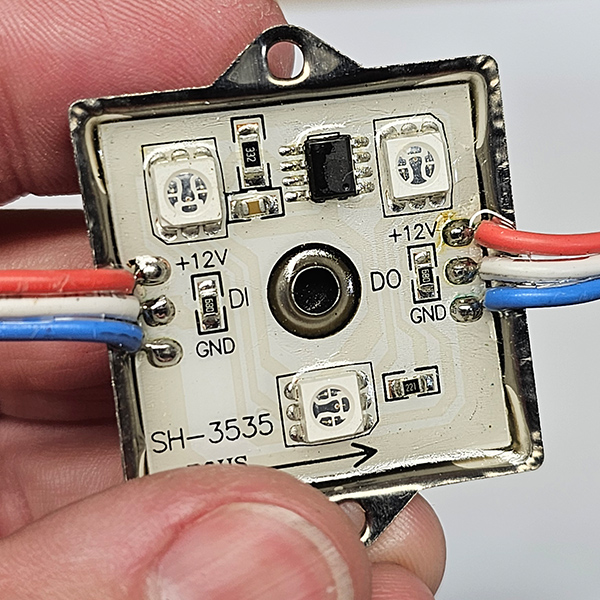
Surface Mount Pixel Modules
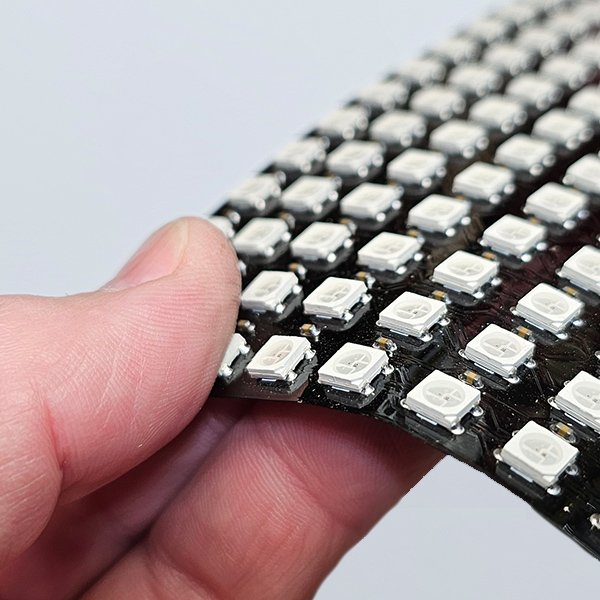
Pixel Flex Matrix

Pixel Stick
Pixel Flex Strips
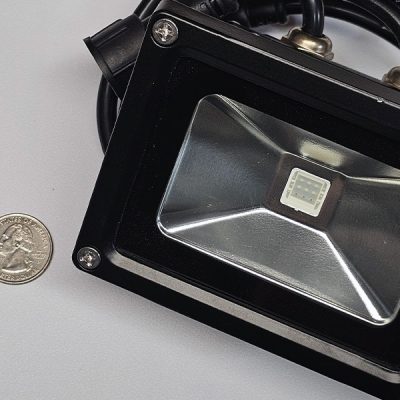
Flood Lights (Pixel)
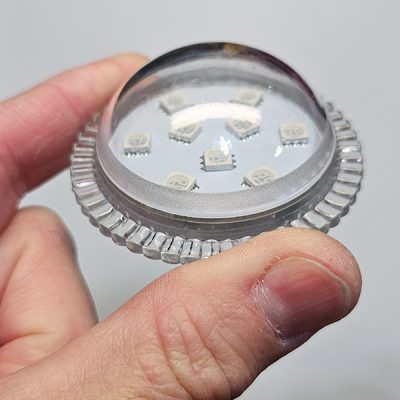
Pixel Puck
Animatronic Santa
One of the most unique elements of our show is Santa.
Santa sits on the front porch and appears to be like any other Santa decoration you can buy from any store. Then when the show starts, Santa comes to life!
Santa began as purchase from a local store. He was gutted and rebuilt with servo motors and control electronics. His arms were completely new builds and have four-joints for realistic arm movements.
We mounted him in a chair and placed him on the porch as the Show’s Host.
Santa Explains The Show
Here is Santa explaining how our show works. You can see Santa’s explanation during the show!

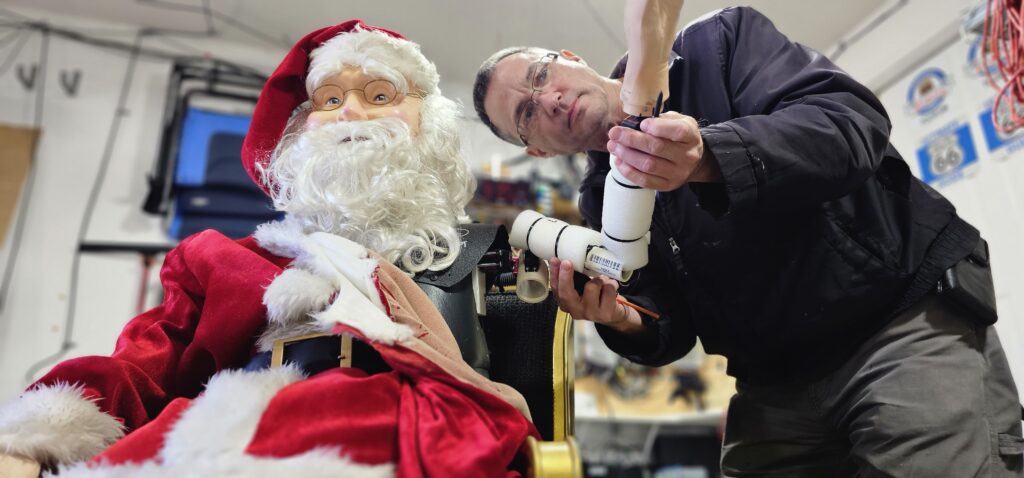
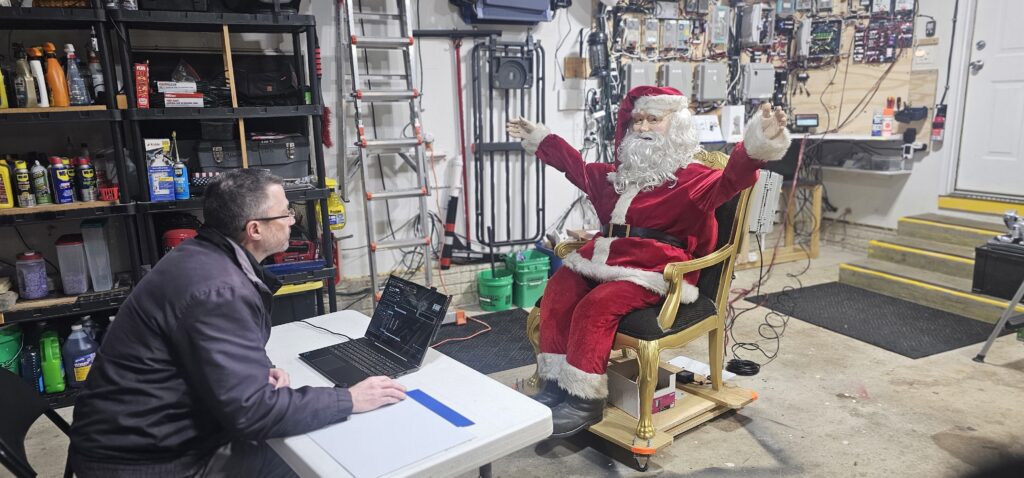

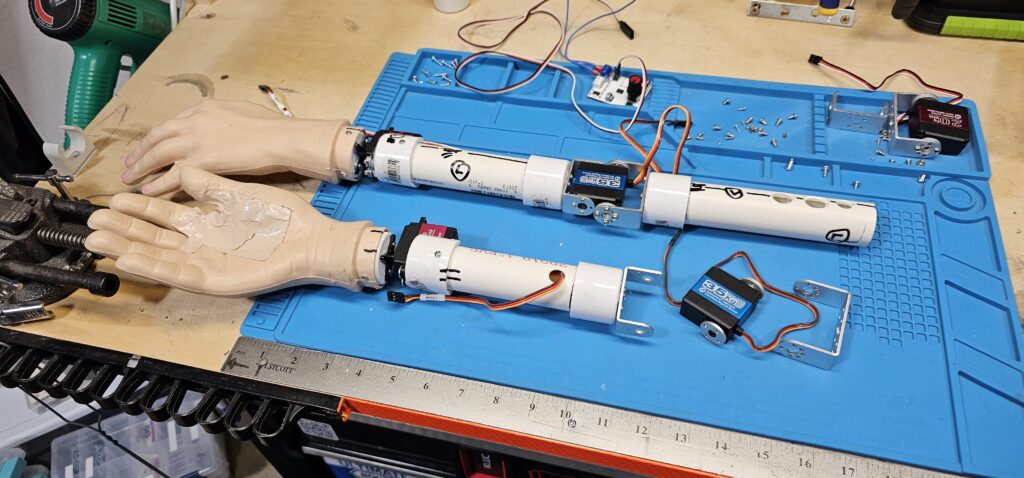
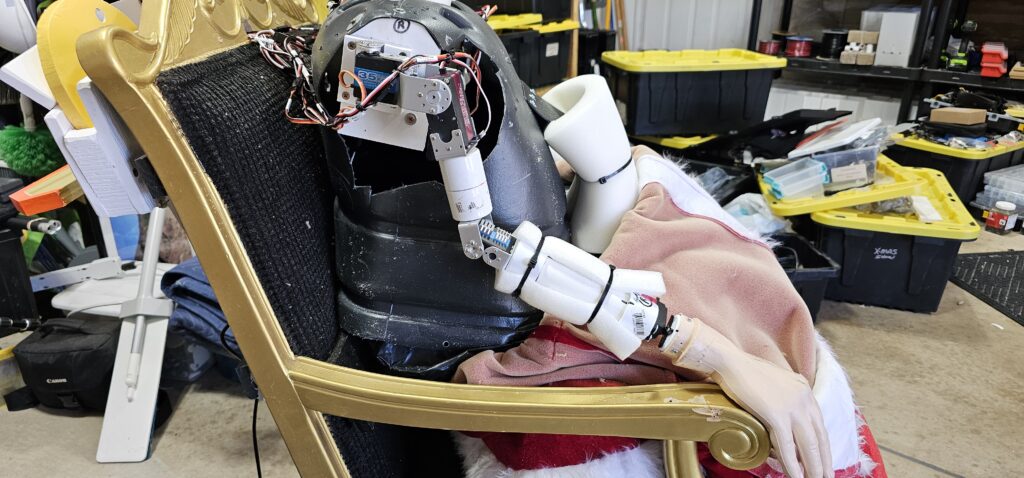
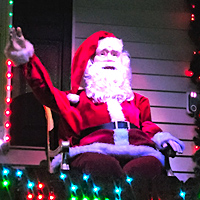
Projection Mapping
Projection Mapping is when we project an image, video, or effects onto the house or other element, with a projector.
Our show uses three projectors for the Garage door, Nutcracker, and Front Window.
This is how we make Nutcracker talk and sing — by projecting a video of his face onto an actual nutcracker figure. The nutcracker was purchased at a local store. Then, we painted over the painted face so it would work as a projector screen.
Each projection element has to be mapped to match the projector’s angle and distance. Then, a video is created and manipulated to work with the mapped area.
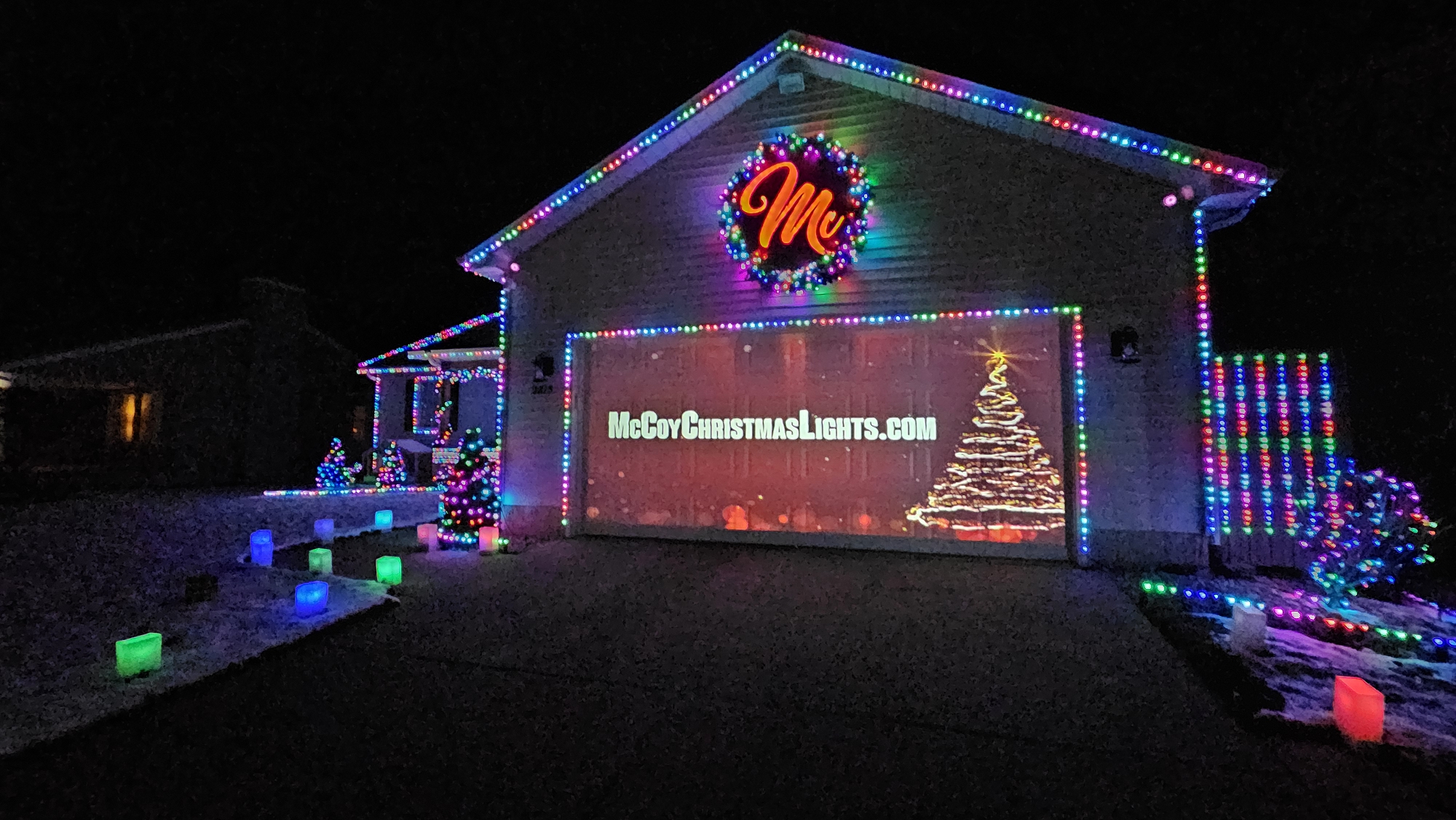






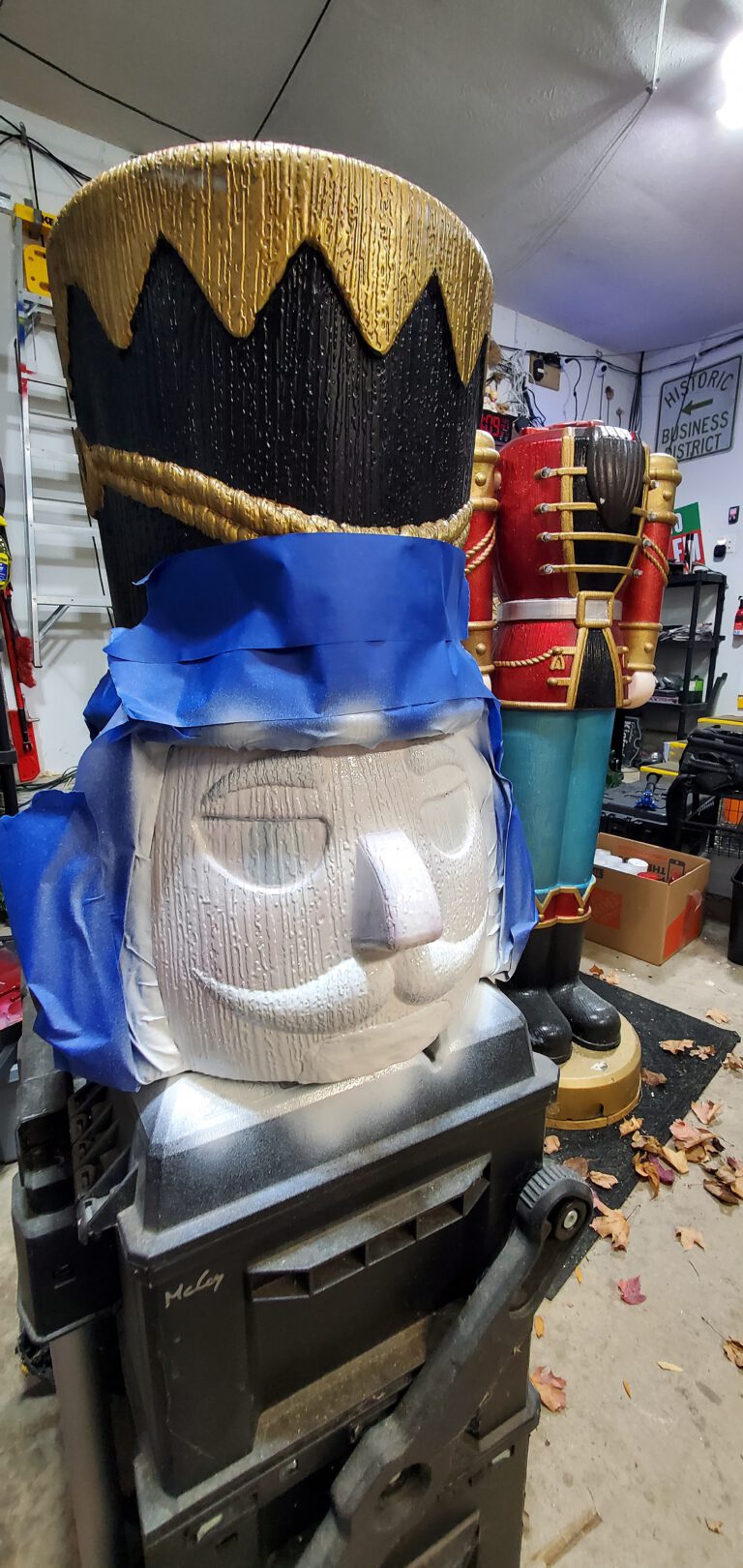
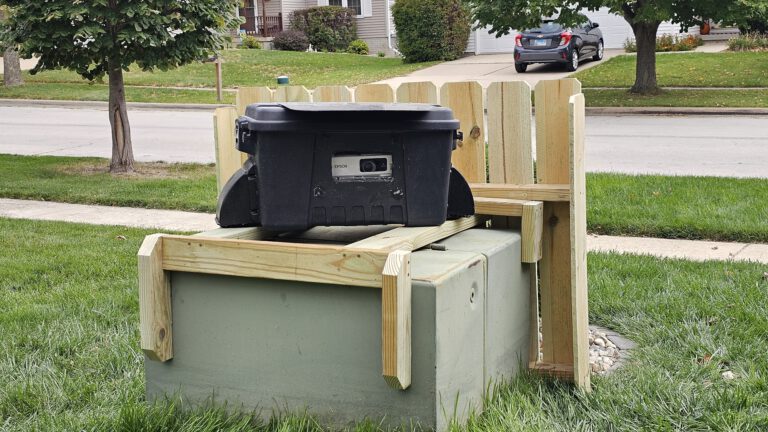
Running the Show
Our Show is run with a series of computers, controllers, an FM transmitter, miles of cables, and other equipment.
The main computer that plays the show is a Raspberry Pi (a computer that fits in the palm of your hand), which is called the “Show Player.” Several Pi computers are used to operate different elements of the show.
The Control Boards control the Pixels as instructed by the Show Player.
Most of the equipment is located on our “control board” in the garage.
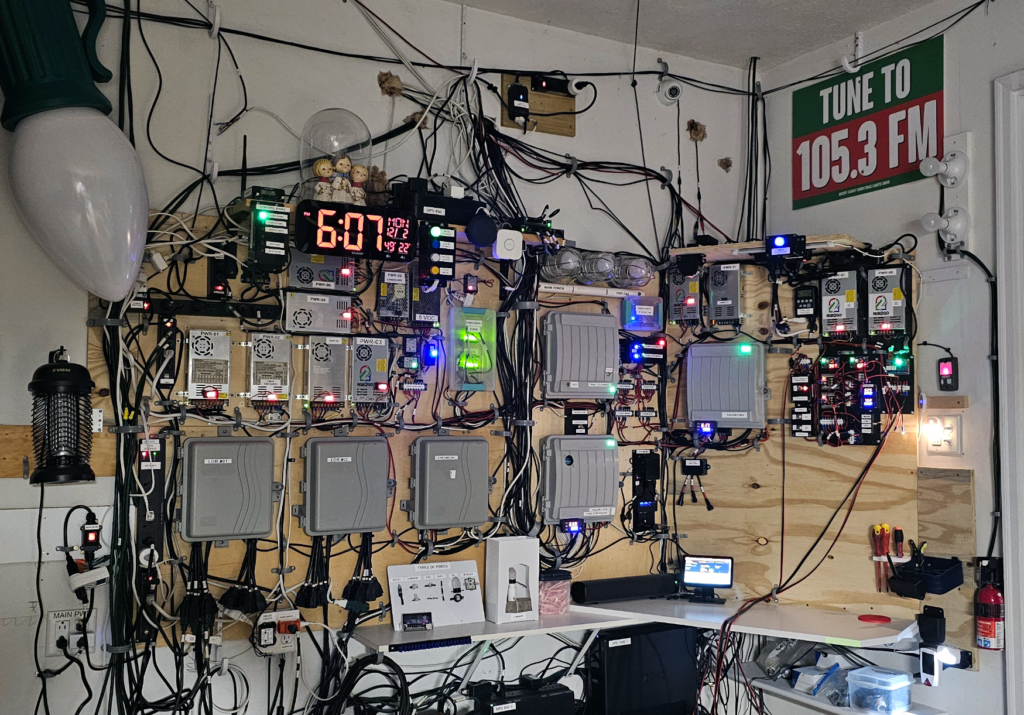
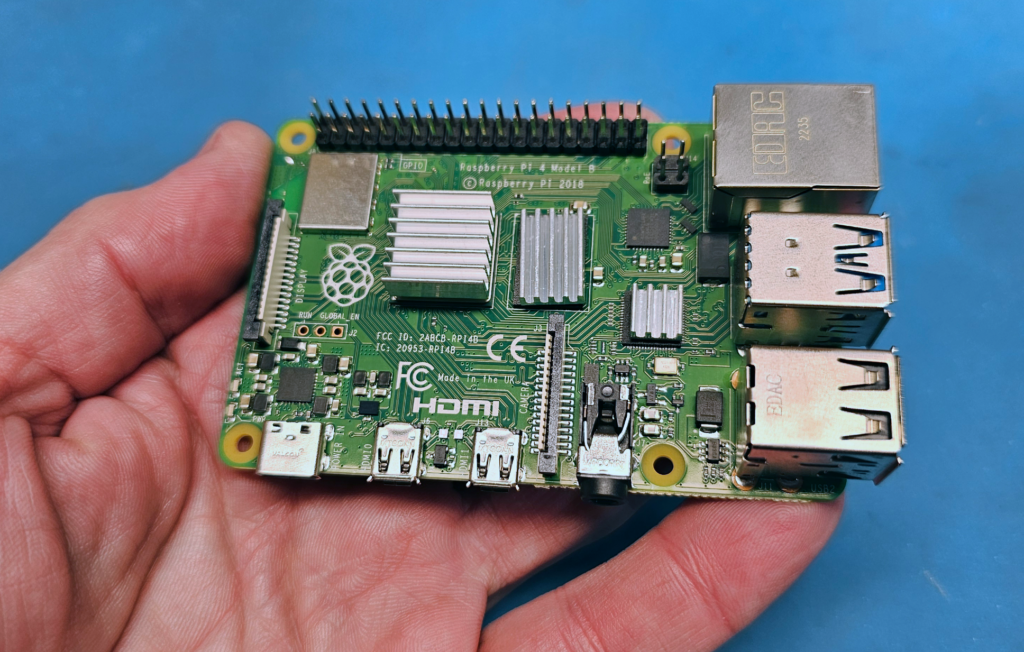



Programming the Show
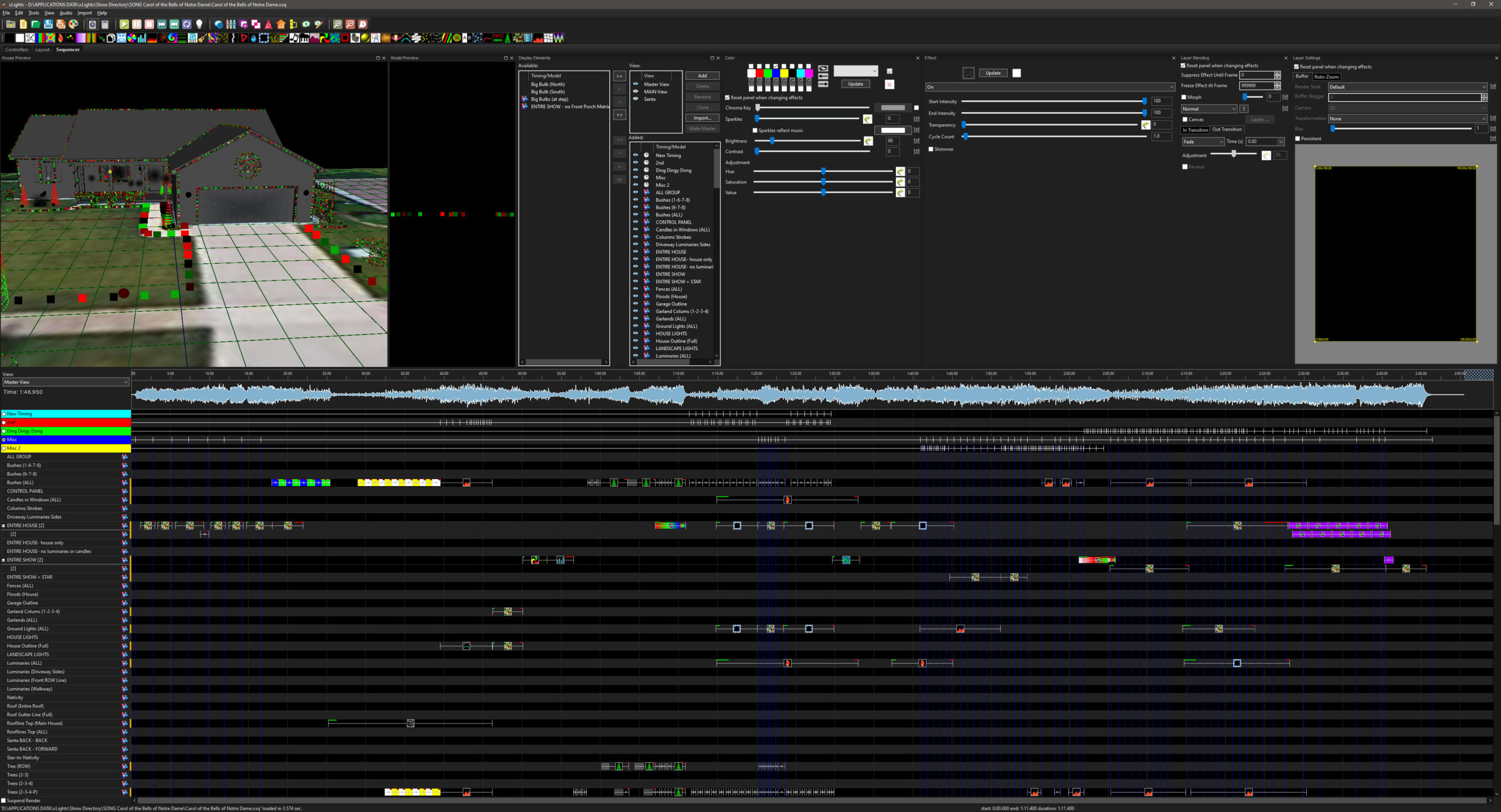
Programming each song (called a sequence) is a time-consuming process. Effects are placed on a time-line to sync with the audio. Each elements of the show (tree, bush, roof-line, etc) can be sequenced by itself or together with other elements.
When each sequence is completed, it’s uploaded to the Show’s main computer and added to the playlist.
We add new sequences throughout the season, so stop back again!
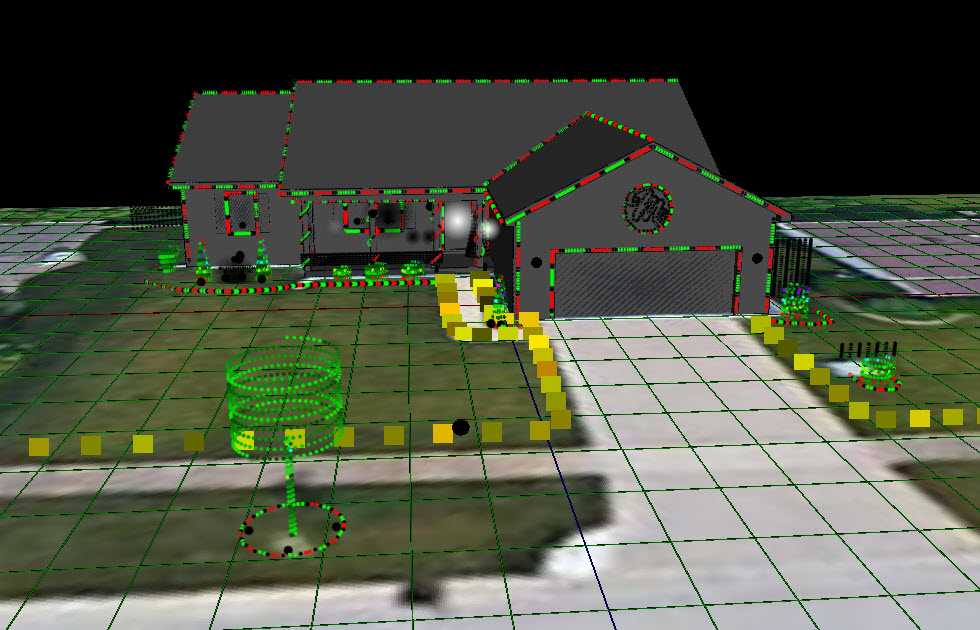
The Show is designed on a 3D layout of the home and property. This allows us to see exactly how each effect will look. It also tells the software where each pixel is located, so they can be sequenced together.
The Build
Building the Show has taken several years. We also build new elements each year, which begins each summer.
We built all of our elements – from the fence matrix, pixel lines on the house, and the animatronic Santa.
One of the primary goals is to create a show where most of the magic is hidden during the day. This is why we don’t use cutout props in our yard. During the day, we want our home to simply look like a home decorated for Christmas. But at night, it glows with Christmas magic!
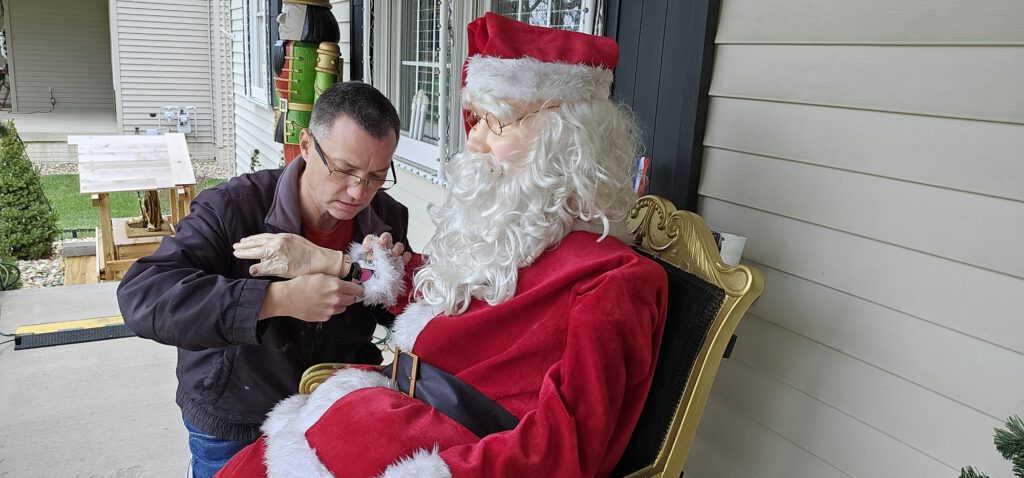
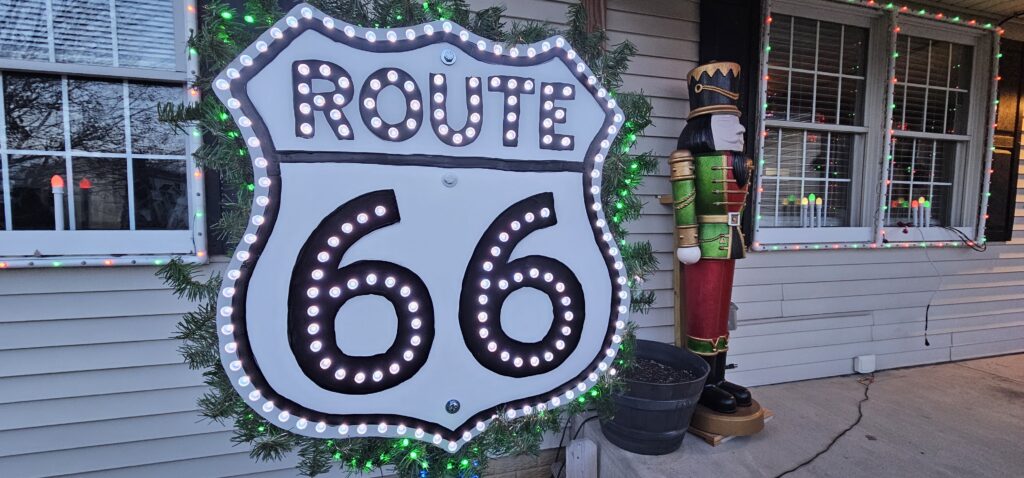
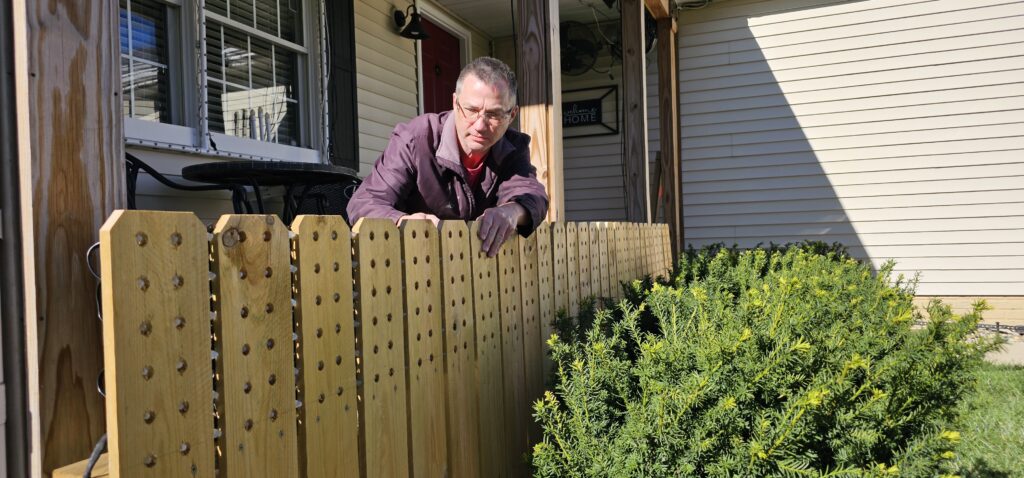
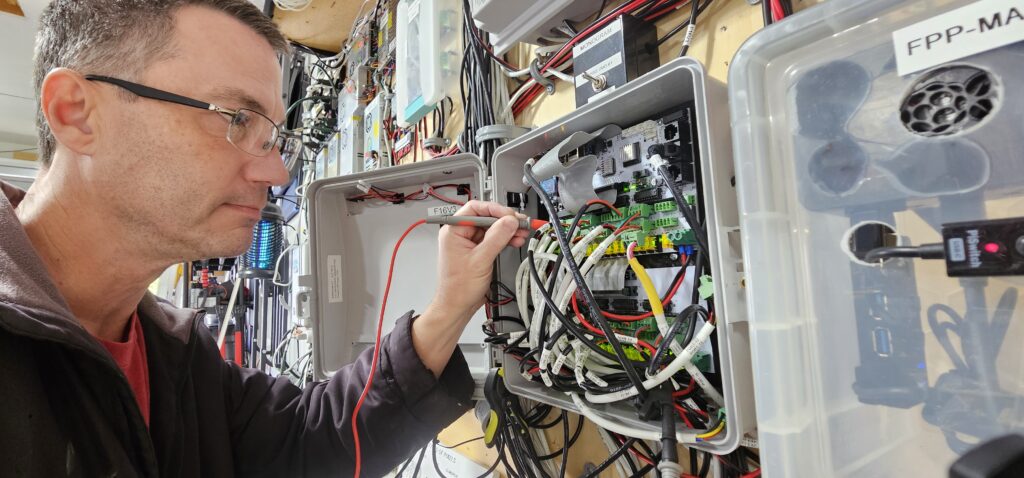

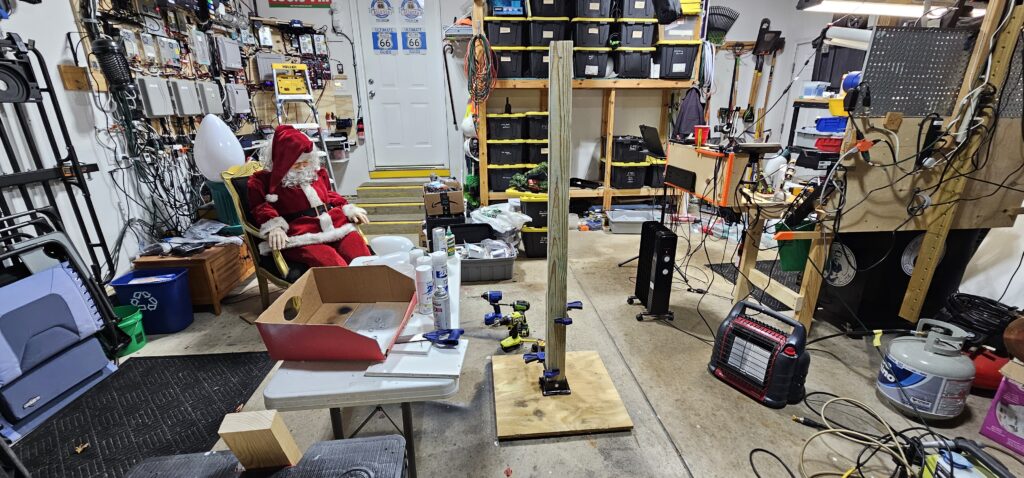


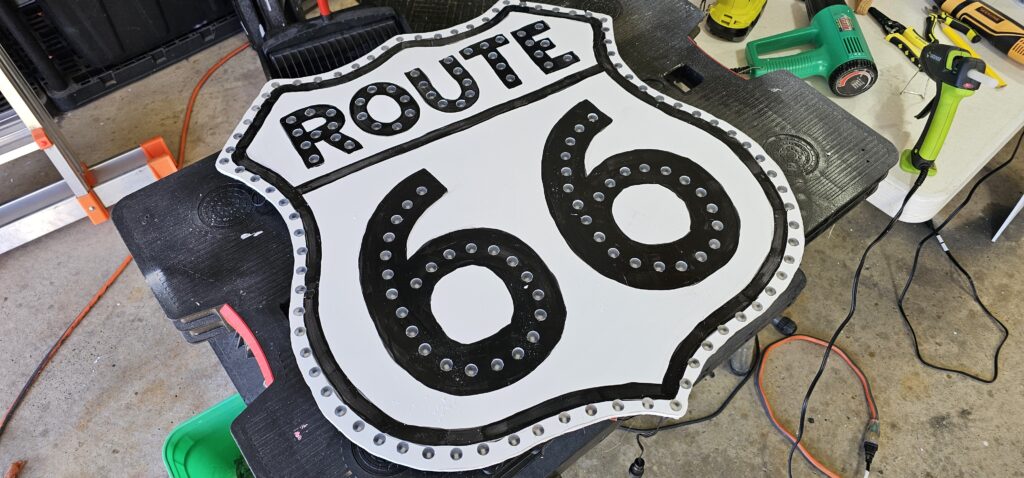
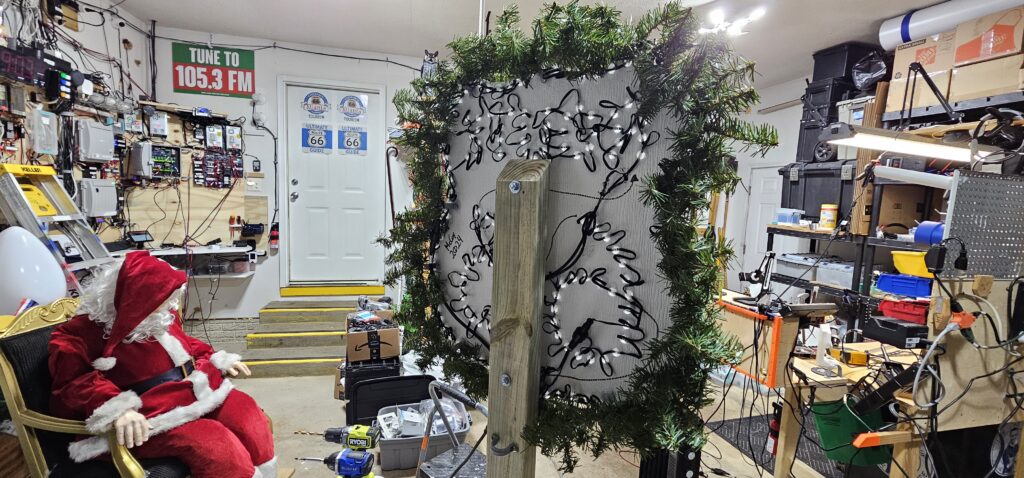
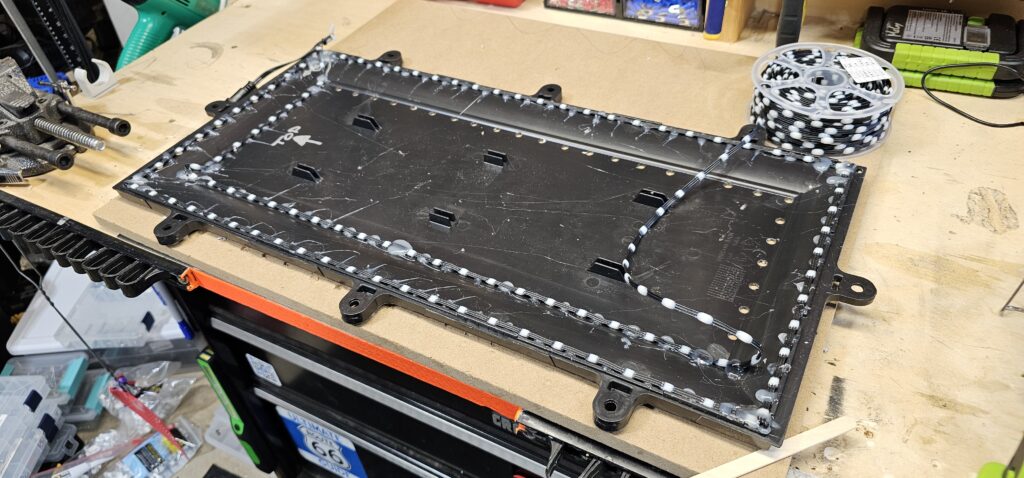
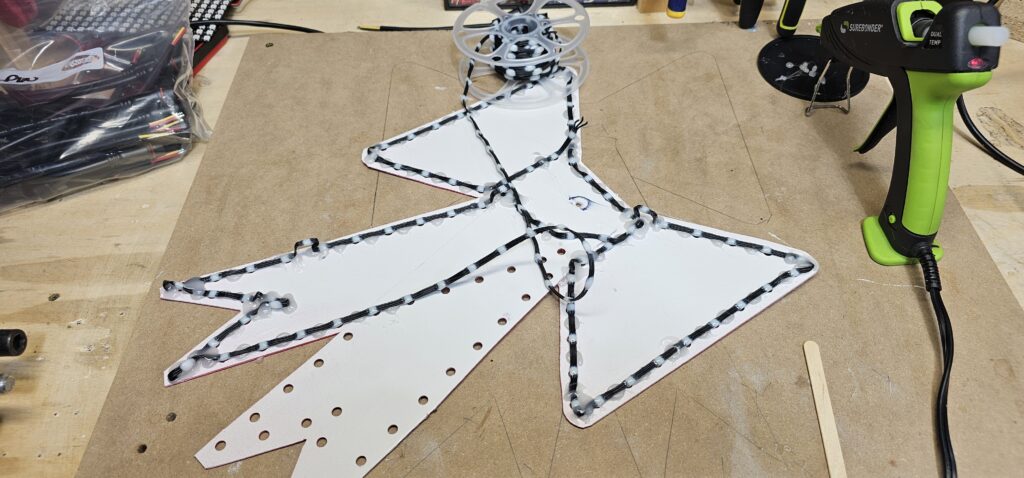
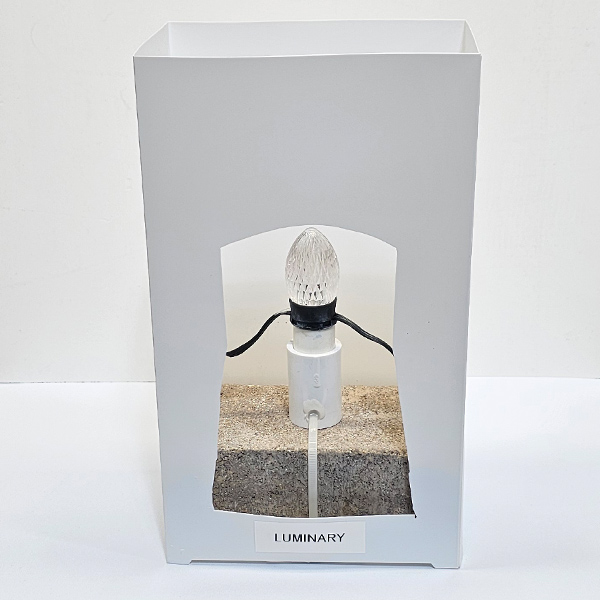

Behind-the-Scenes Tours
Kids and adults alike ask us about our Show and how it works. And, we love showing it off!
Send us an e-mail to contact@McCoyChristmasLights.com to request a behind-the-scenes tour. And everyone gets a free pixel to take home.
Behind-the-Scenes tours are available during the day and not during scheduled show times.
